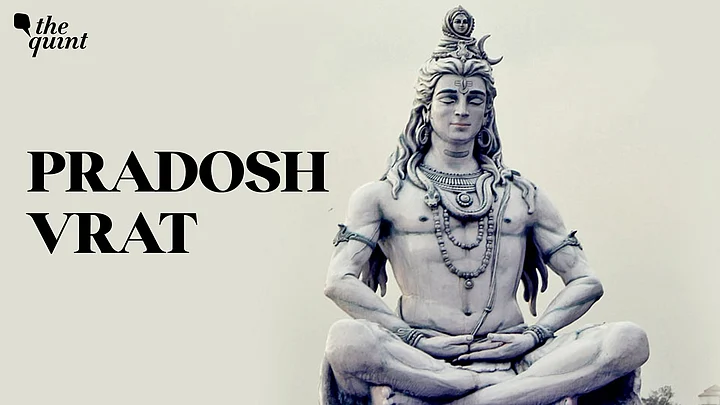Pradosh Vrat in July 2024: Pradosh Vrat, a significant Hindu fasting tradition, holds a special place in the hearts of devotees across India. This sacred observance, dedicated to the Lord Shiva and Goddess Parvati, takes place twice a month on the 13th day of both the waning (Krishna Paksha) and waxing (Shukla Paksha) phases of the Hindu lunar calendar. With deep reverence and devotion, people of all ages and genders come together to participate in this holy Pradosh Vrat, seeking the blessings and spiritual guidance of the divine Gods.
In Hindi, Pradosh means 'first part of the night or evening', therefore Pradosh Vrat is always observed during the twilight or Sandhyakaal. Pradosh Vrat stands as a testament to the deep reverence and devotion that Hindus hold for Lord Shiva and Goddess Parvati. It is a time of joy, celebration, and spiritual reflection, as devotees come together to seek the blessings and guidance of these powerful deities. Through its rituals and observances, Pradosh Vrat provides a profound opportunity for spiritual growth, inner transformation, and the attainment of divine grace.
Pradosh Vrat in July 2024 Date
This month, Pradosh Vrat will be observed on Wednesday, 3 July 2024.
Pradosh Vrat in July 2024 Timing: Tithi and Shubh Muhurat
Pradosha Puja Muhurat: 7:45 pm to 9:02 pm
Duration: 02 Hours 17 Mins
Day Pradosha Time: 7:45 pm to 9:02 pm
Trayodashi Tithi Begins: 7:10 am on 3 July 2024
Trayodashi Tithi Ends: 5:54 am on 4 July 2024
History and Significance of Pradosh Vrat
The story behind Pradosh Vrat is deeply rooted in Hindu mythology. In ancient times, a fierce battle ensued between the Devtas (Gods) and the Asuras (Demons). As the Devtas faced defeat and numerous casualties, they turned to Brahma, Vishnu, and Mahesh for assistance. Seeking a way to gain immortality, Lord Shiva advised the Devtas to churn the ocean to obtain the Amrit (holy nectar). However, the Devtas alone were insufficient in number to perform this task. Recognizing their need for help, the Devtas enlisted the assistance of the Asuras, promising to share the nectar with them as a reward.
As the churning of the ocean commenced, the first substance to emerge was Halahala, a deadly poison capable of annihilating all living beings, including the Devtas and the Asuras. In a selfless act of compassion, Lord Shiva intervened and swallowed the poison, preventing its devastating consequences. Goddess Parvati, filled with devotion and concern, held Lord Shiva's throat to prevent the poison from reaching his stomach, causing it to remain lodged there. In gratitude for Lord Shiva's heroic act, the Devtas and the Asuras sang hymns of praise, expressing their deep reverence and admiration. To honor this momentous event, Pradosh Vrat was established, a sacred observance dedicated to worshiping and pleasing Lord Shiva and Goddess Parvati.
Pradosh Vrat Rituals
Pradosh Vrat is a time of deep devotion and spiritual connection. Devotees begin the observance by offering prayers and performing rituals to Lord Shiva, Goddess Parvati, Lord Ganesh, Lord Kartik, and Nandi. The central focus of the Vrat is the worship of Lord Shiva within a sacred vessel known as the 'Kalasha'. Filled with water and adorned with darbha grass arranged in a lotus shape, the Kalasha serves as a symbol of divine purity and devotion.
During the worship, Shivalinga is ritually bathed with holy substances, including ghee, milk, and curd. Bilva leaves, considered particularly auspicious during Pradosh Vrat, are offered to the deity. Devotees then recount stories from the Shiva Purana or listen to the Pradosh Vrat Katha, a sacred narrative that recounts the significance and benefits of the vrat. The Mahamrityunjaya mantra, a powerful hymn dedicated to Lord Shiva, is chanted 108 times during the observance.
As the worship concludes, devotees apply sacred ash on their foreheads, symbolizing their connection to Lord Shiva and seeking his blessings. They also sip water from the Kalasha, imbibing its divine essence and seeking spiritual purification.
Why to Observe Pradosh Vrat?
Pradosh Vrat is believed to bestow numerous spiritual benefits upon its devout observers. It is believed to enhance one's spiritual growth, promote inner peace and tranquility, and strengthen the bond between devotees and the divine. By observing this sacred Vrat, individuals seek to cleanse their souls, overcome obstacles, and attain spiritual liberation.
(Disclaimer: Parts of this article were generated by AI and published after the content was editorially modified and verified by a human based on their own judgement and expertise. The Quint does not publish AI-generated content without direct human involvement and oversight).
(At The Quint, we question everything. Play an active role in shaping our journalism by becoming a member today.)
